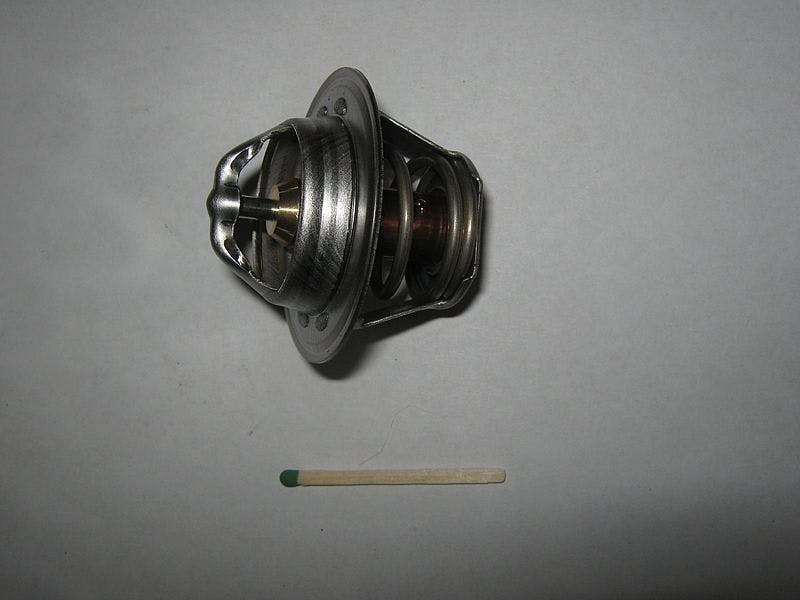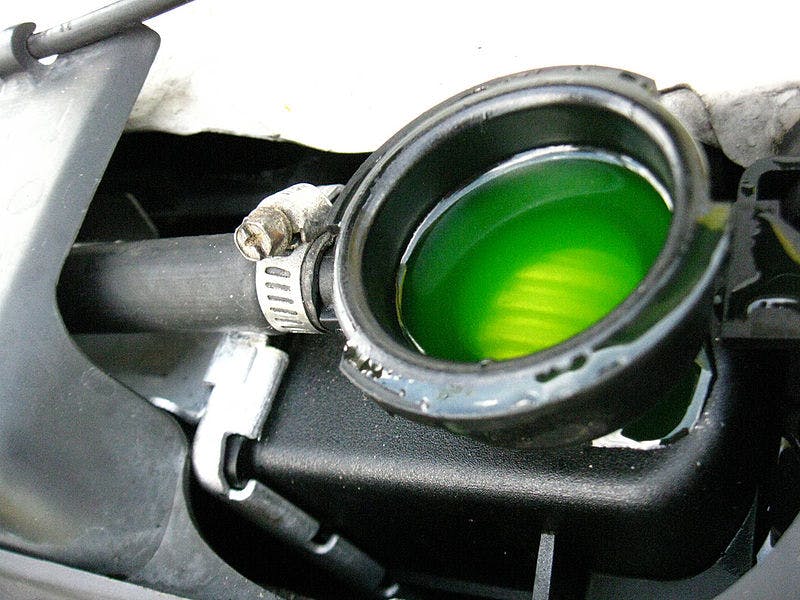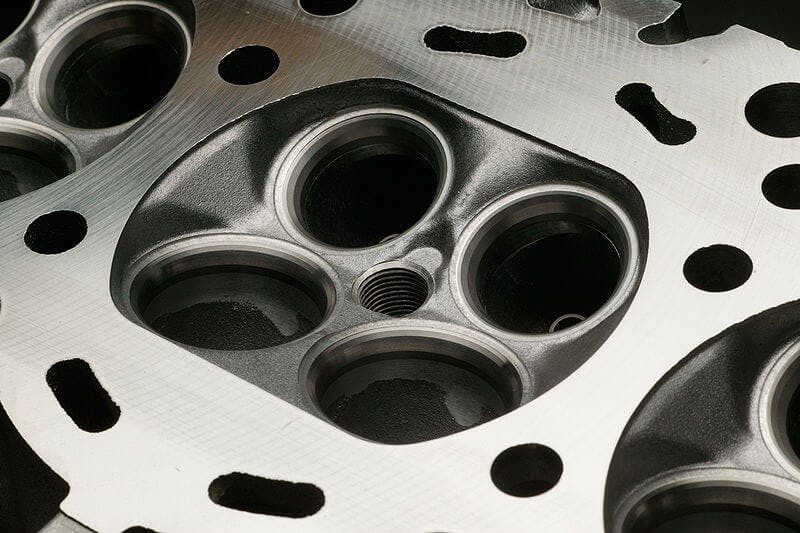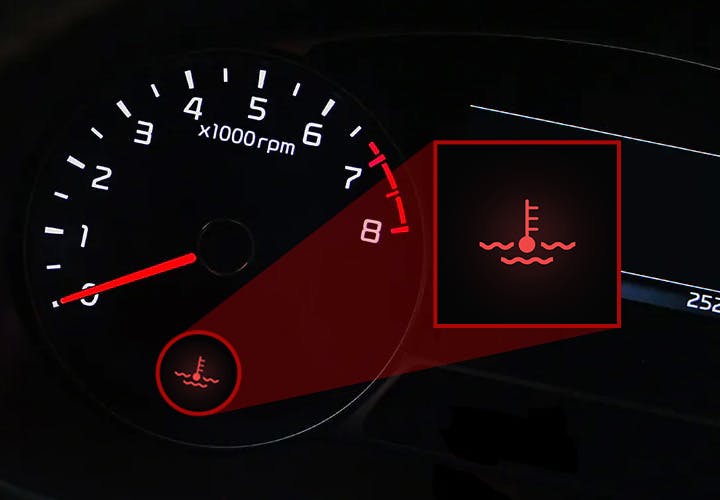Thermostat: How does it work?

A thermostat is a device that controls the flow of coolant liquid in the engine's cooling circuit. Every engine has a certain ideal working temperature that it needs to reach for its optimal operation.
If the engine does not work at its ideal working temperature - it is not optimally warmed up - it leads to higher fuel consumption, worse operation, higher noise, but also greater wear of all engine parts.
Inhaltsverzeichnis
Thermostat function
The task of the thermostat is to control the cooling circuit and to reach and maintain the optimum operating temperature of the engine as quickly as possible. When the engine is cold, the water pump supplies coolant liquid only to the block casing and the engine head.

Coolant Liquid: What do the different colors mean?
The coolant returns to the pump through the bypass hose from the cylinder head and the engine block because the thermostat is still closed.

However, the thermostat valve opens once the optimal operating temperature is reached. The coolant begins to flow through the entire cooling circuit into the radiator, where the flowing air cools the coolant.
The thermostat must open at the right moment - not too early, but not too late. If the thermostatic valve were to open too soon, the engine would warm up slowly and poorly and would not maintain the optimal operating temperature.

Cold Engine: What happens in the engine as it warms up?
However, if the thermostat was opened too late, the temperature would be too high, and the coolant would start to boil.
When does the cooling fan turn on?
If the temperature exceeds excessive values despite a properly functioning thermostat, the cooling fan is switched on via the switch on the thermostat. With a properly functioning thermostat, the car should warm up lightly within about 3 minutes, and the radiator must remain cold until the coolant reaches 90 degrees Celsius (almost 194 degrees Fahrenheit).

When this temperature is reached, the thermostat opens, and the radiator heats up in a short time. However, if the temperature of the coolant quickly climbs into the red zone after starting the engine and the radiator remains cold, the thermostat is blocked and does not open.

Red Engine Coolant Light: Stop your car now! 🚨
Maintaining the optimal temperature is controlled by the opening and closing of the valve, which is carried out with the help of wax, paraffin, and similar fillings in the thermostat. When the desired temperature is reached, the wax liquefies and expands, pushing against the piston, which opens the thermostat valve.
In the latest car models, however, you can find electrically controlled thermostats, which can control the cooling more precisely.

Thermostat and its effect on consumption
The correct operation of the thermostat has a beneficial effect on fuel consumption and the life of the engine because it ensures the engine is at the ideal temperature for its operation.

High Fuel Consumption: 14 most common causes
If the thermostat is not working correctly, fuel consumption can increase by 1 liter per 100 km, depending on the type of car and its engine. By postponing the replacement of a malfunctioning thermostat, you will cause yourself headaches in the future.